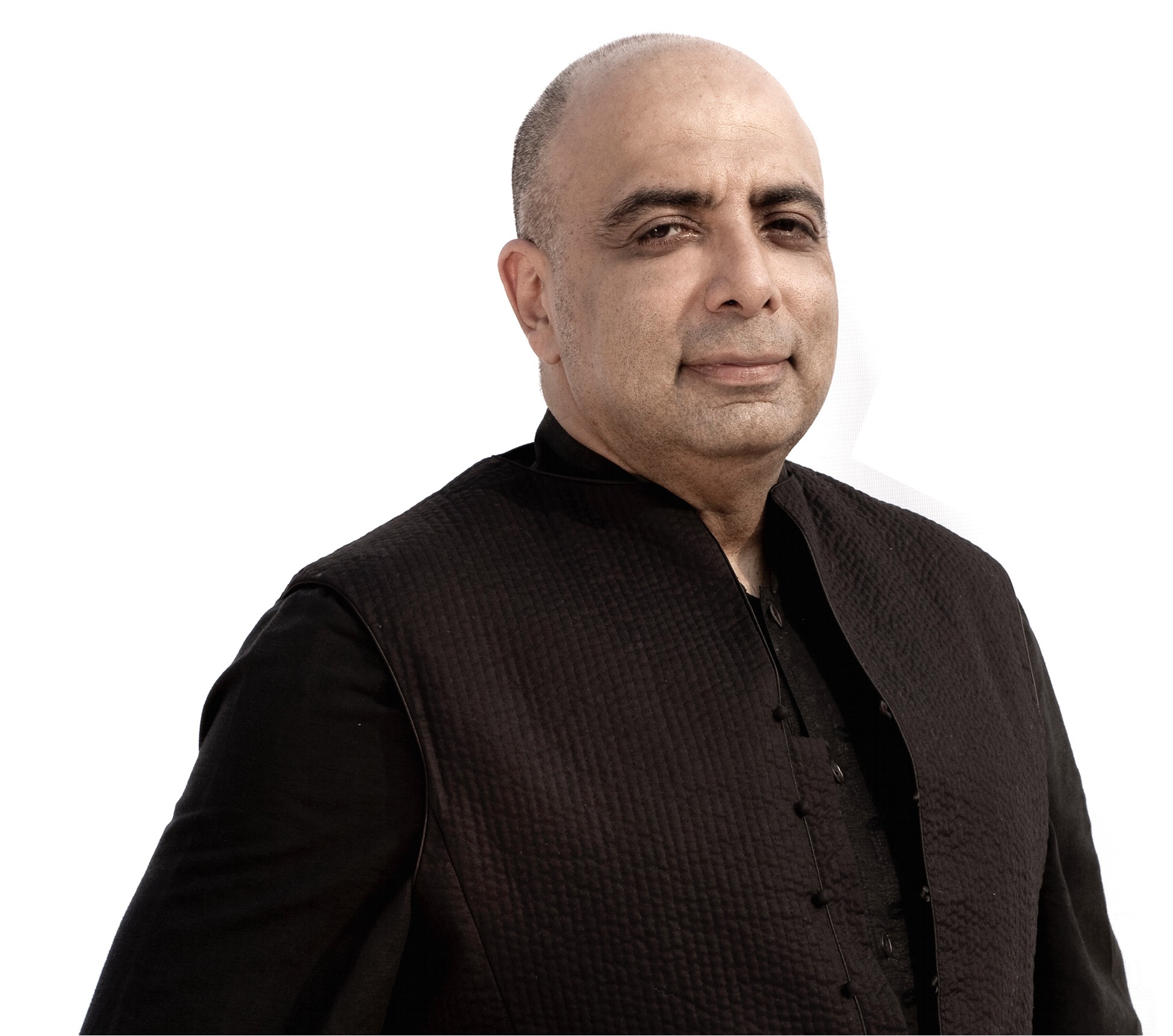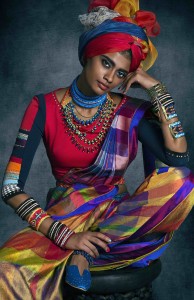
It’s a very stimulating profession – It combines artistry, history, history of costumes, textiles, embroideries, draping, geometry… and of course it must reflect the current changing times, so at one level, you also have to be a bit of a sociologist.
Tarun Tahiliani, fondly known as TT, founded his design studio in 1990 and opened India’s first multi designer boutique, Ensemble in 1991, simultaneously working to get his associate degree from the Fashion Institute of Technology, New York. He has several design and fashion achievements to his credit, one of which is that he was the first Indian designer to be invited to showcase at the prestigious Milan Fashion Week. Distinctly associated with an “India Modern” image, the Tarun Tahiliani Design Studio today creates couture, diffusion and prêt-a-porter, known for designs that are Indian in their sensibility, yet international in their appeal. Tarun Tahiliani is the preferred designer wear today for several celebrities and actresses across the country including Aishwarya Rai Bachchan, Shilpa Shetty Kundra, Lisa Haydon, and his sari – a signature TT creation – was an Oprah Winfrey pick too during her Indian travels.
If you simply had to draft that elevator pitch for your profession, what would it be?

Well, from what I see fashion designers live longer if they do not drink too much.
I think it’s a very, very stimulating profession – It combines artistry, history, history of costumes, textiles, embroideries, draping, geometry with the pattern making and of course it must reflect the current changing times, so at one level, you also have to be a bit of a sociologist.
I think this combination is rare and for somebody who likes the art and the applied arts, and draping and textiles and vastra, it’s a wonderful space to be in.
One also gets a chance to work with varying groups of people – for instance, since one works from visual imagery, there’s theatre and the shows.
So in a way my profession is connected to all the areas of interest that I had as a child growing up, which I think is rather lucky.
What sort of formal education is an absolute essential for your profession, in your opinion? And is an internship a good idea?

Formal education is always a good idea, because it imbibes you with a sense of technique and a technical understanding of the materials you work with, but there is nothing greater than just doing it again and again and again.
Some of the greatest designers of the last century like Coco Chanel grew up in orphanages and the only formal education they got was to sew, but then when she started fitting, her now famous arm-holes, she devised her own thing by cutting and hacking at it every day.
Different people work best with different idioms – I work through sketches and draping, proportioning, for instance.
A formal education only gives you a fast forward into some experience rather than learning everything by trial, which today can become a very expensive proposition.
In light of this, an internship is a wonderful idea specially if one works with a designer whose style one has time for and likes, because then this is another fast forward into the world of how they get to the shapes or techniques or finished garments that they do. It opens up the eyes of the intern to what can possibly go wrong and knowing what can go wrong is always a very important lesson to learn to make sure things go right when you are on your own.
Show me the money! How do you see this profession faring 20 years down the line?

Well, unfortunately as with everything else, it’s going to be taken over by major corporations and so I imagine a lot of the brands today will be giant mammoth brands. Having said that, people are always looking to differentiate themselves, so there will be new brands, there will be brands that are more special and people have had more varied lines.
It’s sort of like, if someone said to the Italian designers 20 years back ‘What will your brands look like?’, who would have known that most of them would be global giants, which is what they are today.
I am not so sure if India will go through the same route, but I definitely think that the sales can be very high, even if they don’t cater to every nationality as the Italians seem to do.
If you could do some time-travelling and go back to meet yourself at 17, 25, 35, what would you say to your selves then?

bustier paired with a lungi skirt; Ombre draped shift dress
Photographed by Rohit Chawla
At 17, I would have said to myself, to seriously think about going to Art school and trying to decondition myself from all the years of being told that one should become an engineer and then go to a business school. I couldn’t study engineering as I had no interest in it and I ended up going straight to an undergraduate business school.
I think I might have enjoyed going to an art school for those four years to really develop that sense of aesthetic and technique.
At 25, I had started doing what I really wanted to do and which by then had become the basis for my profession, which was to start the first Indian design multi-brand store with my wife Sal. It eventually made me decide that I wanted to design and I went off to study.
At 35, what I would have said to myself was that I was entering possibly the 10 of 15 most important years, where I still had endless energy and I should have thought more carefully of the consequences of everything.
Going to Milan to show because you were picked was not a means to an end, unless you really develop the business, because after all, what’s the point of showing at Milan if you don’t develop a business? I should have worked that out. When we went to Milan, we didn’t have our production sorted out. We didn’t have our outsourcing factories. Although the show was brilliantly received, we seemed to be living in two worlds, which at that time was not such an easy idea.
So at 35, I should have deferred the decision to show in Milan till I was ready or if I did decide to show, I would have done it all a little differently.
Do you engage in any kind of supplementary informal learning that gives you an edge? Any specific reading that you do –magazines, books, blogs, courses? How do you stay in touch with trends?
I believe in self-reflection quite a bit. I have always been very interested in new techniques and how the business should progress, so I am constantly giving it thought, looking at the impact that it would have. I am interested in a lot of allied things specifically art, contemporary art, museums that fuel the prints, fuel embroideries and the stories, but the story has to be backed by something that is wearable. I do stay in touch with trends and I try to work in a more visceral manner.